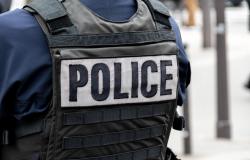Par
Editorial L'Aigle
Published on
Nov. 23, 2024 at 8:45 a.m.
See my news
Follow The Norman Awakening
Since October, the media library intercommunal association of the Vallées d’Auge and Merlerault offers sessions “ Baby readers » intended for toddlers from 0 to 3 years ! These sessions take place on Wednesdays, alternating at Vimoutiers et Gaped also. They are led by the agent, Axelle Gardewhich makes a selection of albums intended to interact with its -very- young audience. The session lasts one twenty minutes.
Parents, grandparents and childminders
“Baby readers, the action is aimed at toddlers aged 0 to 3 years old accompanied by their parents, grandparents or childminders” explains Camille Daligault, responsible for culture. To take part, it is not obligatory to be a subscriber to the media library. The session is free and open to those who want to benefit their little ones. And although registration is recommended, it is not required.
So, Françoise et Gérard Ernouxgrandparents of Jonas et Ezekiel, came with their grandchildren, Wednesday November 13.
“We have them in custody, and our daughter told us about this activity. The children know the media library, they come here. The youngest doesn’t know how to read yet, but he always has a book that goes with him.”
At the end of the session, Gérard Ernoux thinks “it’s great. It’s enriching for the children.”
“Develop the skill”
The objective consists of “developing a taste for stories from an early age. The little ones letting themselves be carried away by this moment of reading that we offer them. They smile, or widen their eyes, they clap their hands. Before it makes sense, the story read is already a moment of pleasure for them. As they grow up, baby readers become children who are skilled in handling books and curious about the stories they encounter” adds Camille Daligault.
The sessions may be enhanced with “nursery rhymes and sometimes musical accompaniment by the music school”.
Ciné Mômes arrives in January
This meeting intended for the early childhood “is added to the offer already proposed by the Cdc RAMI service (itinerant maternal assistance relay), always with a view to the diversity of the offer in the territory and to focus on the proximity of services” underlines Camille Daligault.
Another novelty, a Ciné Mômes will be launched in January 2025.
It will be once a month, on Wednesday afternoon, in Vimoutiers, the room having a large screen. Films for young people will be shown. They will release the great classics of animation in the spirit of developing a taste for cinema, in a friendly atmosphere
The action is aimed at an audience aged 6 and over and their chaperones. And it is free. The launch date remains to be determined.
Story time, Saturday December 7 at 10 a.m., in Vimoutiers (from 4 years old). Baby readers, Wednesday December 11 at 10 a.m., at gacé (0 to 3 years old). Contact by email at [email protected] or 02 33 12 56 36.
Follow all the news from your favorite cities and media by subscribing to Mon Actu.






